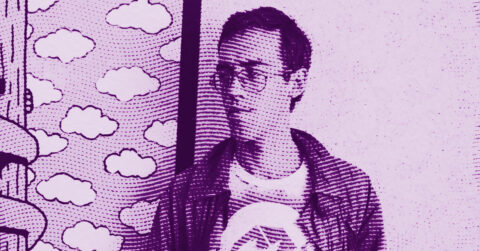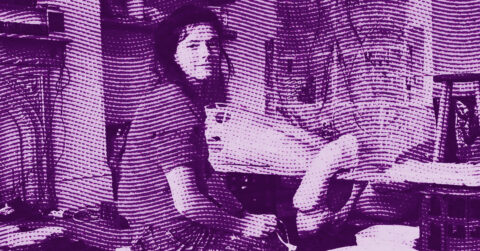Listen to me carefully, you bunch of snobs. Susan Rothenberg was not an artist; she was a witch. A witch who transformed the canvas into a theater stage where horses galloped nowhere, where bodies dismembered to better reveal themselves, where every brushstroke became a primal scream in the deafening silence of 1970s New York. When this woman from Buffalo arrived in minimalist SoHo with her three equine canvases in 1975, she did not simply exhibit paintings. She detonated forty years of artistic dogmas with a single oblique glance.
For you see, Rothenberg perfectly mastered the art of theatrical paradox. Just as Antonin Artaud revolutionized the stage with his Theatre of Cruelty, she transformed painting into a space where pure expression supplanted representation. Her horses from 1975 to 1980 are not animals; they are actors on a bare stage, ghostly silhouettes embodying the very essence of dramatic movement. In “Butterfly” from 1976, this horse crossed by black diagonals irresistibly evokes Artaud’s masks, those faces deformed by emotional intensity. Rothenberg, like the master of cruel theater, understood that true art does not entertain but disturbs, does not reassure but unsettles.
Rothenberg’s genius lay in her ability to do theater without decor. Her canvases function like bare sets where the action focuses on the essential: gesture, raw emotion, truth stripped of all artifice. “Cabin Fever” from 1976 transforms claustrophobia into an expressionist ballet, this ghost horse dancing its contained rage on an ochre background that pulses like a theater curtain. Rothenberg instinctively applied Artaud’s precepts: “One must believe in a sense of life renewed by theater.” Her paintings renewed the meaning of painting through primitive, visceral theatricality.
This theatrical dimension explains why her works still retain their impact today. Rothenberg did not paint horses; she staged human animality. Her creatures leap, rear, flee in a mental space where a constant dramatic tension reigns. Peter Schjeldahl was right to call her 1975 exhibition a “eureka” [1]. It was indeed a moment of revelation, when American painting rediscovered its incantatory power, its ability to transform the viewer into a witness of an ancestral mystery.
But Rothenberg did not stop at the mere reminder of primitive arts. Her approach revealed a deep understanding of Jungian psychoanalysis and its theory of archetypes. Carl Gustav Jung developed the idea that certain images spontaneously emerge from the collective unconscious, carrying a universal symbolic charge. Rothenberg’s horses function precisely as these Jungian archetypes: they emerge from the canvas with the evidence of a recurring dream, charged with a libidinal energy that the artist herself did not seek to domesticate.
Jung distinguished the personal unconscious from the collective unconscious, that reservoir of primordial images shared by all humanity. Rothenberg drew directly from this second level, creating works that bypass the intellect to speak directly to our archaic impulses. “United States” from 1975, with its ghostly horse emerging from a two-tone background, evokes those dreamlike apparitions that Jung analyzed in his patients: spontaneous manifestations of the collective soul.
The artist unknowingly applied the Jungian method of active imagination, that therapeutic technique where the analyst encourages the patient to freely express images from their unconscious. Rothenberg painted as one does active imagination, allowing these mysterious horses to emerge without trying to explain them rationally. She stated, in fact: “You have to find things that interest you and find interesting ways to depict them” [2]. This intuitive approach corresponds exactly to what Jung recommended: to trust the images that emerge spontaneously, even if their meaning remains obscure.
Rothenberg’s transition to bodily fragments in the 1980s confirms this Jungian interpretation. Disembodied heads, floating hands, fragmented bodies: motifs that psychoanalysis identifies as manifestations of the traumatized unconscious. But in Rothenberg’s work, these dismemberments do not express pathology; on the contrary, they reveal exceptional artistic health. She intuitively understood that authentic art must first deconstruct in order to then reveal.
“Blue Head” from 1980-1981 perfectly illustrates this approach. This monumental head floating in pictorial space evokes the archetypes of the Great Mother analyzed by Jung, those primordial maternal figures that haunt the collective imagination. Rothenberg did not seek to illustrate Jungian theory; she lived it through her painting, transforming each canvas into a collective analytic session.
Her move to New Mexico in 1990 marked a new phase of her archetypal exploration. The American desert, with its vast expanses and harsh light, awakened other layers of the collective unconscious in her. Her paintings from this period, like “Dogs Killing Rabbit” from 1991-92, reveal a harsher understanding of primitive impulses. Jung spoke of the shadow, that dark part of personality that civilization represses. Rothenberg gave form to this shadow in scenes of natural violence of terrifying beauty.
This evolution confirms Rothenberg’s extraordinary emotional intelligence. She did not merely paint subjects; she mapped the secret territories of the human soul. Each phase of her work corresponds to a deeper descent into the layers of the unconscious, from the symbolic horses of the 1970s to the dreamlike scenes of her later decades.
The artist also worked in the pure tradition of Jungian individuation, the process by which the individual gradually integrates the different aspects of her personality. Her rare self-portraits, like the one seen in “Red Studio” from 2003, show a woman deliberately representing herself incompletely, without arms or neck, a simple ghostly presence. This approach reveals an acute awareness of the limits of self-representation, a humility that characterizes individuals who have reached an advanced level of individuation.
Rothenberg’s genius ultimately lay in her ability to transform art into collective therapy. Her canvases function as transitional spaces where the viewer can project their own archetypes, relive their own traumas, recognize their own impulses. She created works that heal without claiming to cure, that reveal without claiming to explain.
This therapeutic dimension explains the lasting impact of her work. At a time when contemporary art sometimes seems to indulge in gratuitous provocation or sterilizing intellectualism, Rothenberg reminds us that painting can still touch the soul directly. Her latest works, like “Buddha Monk” from 2018-19, confirm this spiritual vocation. This meditative monkey with multiple gestures evokes Hindu deities, those archetypal figures who embody the different aspects of human consciousness.
Rothenberg died in May 2020, but her legacy endures in every canvas that still dares to confront the collective unconscious. She showed us that true art does not merely decorate collectors’ walls; it permanently inhabits the imagination of those who have encountered it. In a world saturated with ephemeral digital images, her paintings retain that Benjaminian aura of authentic artwork, that irreplaceable presence which transforms contemplation into a spiritual experience.
Because Susan Rothenberg never painted horses. She painted our humanity in its raw state, our most primitive fears and hopes, our most secret dreams and nightmares. She reminded us that art, when it reaches its truth, does not entertain but initiates. And this initiation still leaves indelible traces in our transformed gaze today.
- Peter Schjeldahl, art critic, cited in various sources on the 1975 exhibition at 112 Greene Street
- Quotation from Susan Rothenberg, Museum of Modern Art, New York.
















